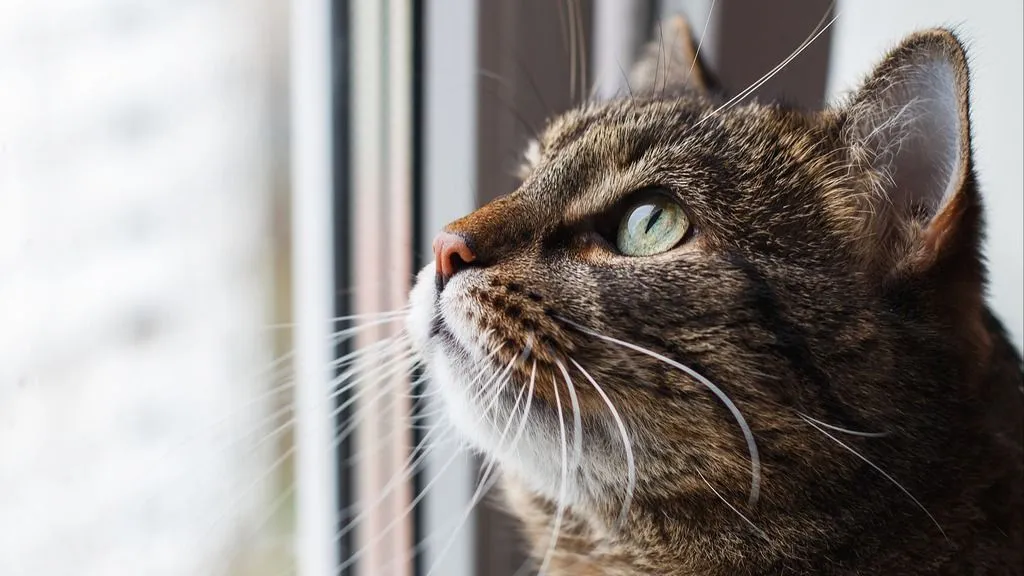Cats and human emotions: A stronger bond than we thought?
A recent study shows cats can detect human emotions through scent—especially fear—suggesting our cat friends might understand us more than we realize.
Posted by
Published on
Wed 02 Apr. 2025
Topics
| Emotions | The Observer XT | Video Recording | Animal-human Interaction | Behavioral Research |

For centuries, dogs have been credited as humankind’s best friend, while cats have often been seen as independent and aloof creatures that engage with humans only on their own terms. And yet, recent research suggests that cats may be more attuned to human emotions than previously thought.
Studies show that cats react to their owners’ visual and vocal signals and adjust their behavior based on human emotions.
Odor plays a central role in the social behavior of domestic cats, but little is known to what extent cats can perceive human emotions through scent. Researchers from the University of Bari Aldo Modo in Italy explored this by examining how cats react to human odors associated with different emotional states (d’Ingeo et al., 2023).
The experiment: Can cats smell human emotions?
To investigate whether cats can smell human emotions, d’Ingeo and her colleagues conducted an experiment using odor samples from three unfamiliar men exposed to different emotional states: fear, happiness, physical stress, and neutral. Sweat swaps were collected after the men watched emotionally charged videos (fear/happiness), after they ran 15 minutes (physical stress), and after they showered (neutral).
Twenty-two cats were tested in their home environment, where each odor was presented to the cat for 45 seconds, with 40 seconds in between odors. Owners were asked not to look at or talk to their cats, since even eye contact or a simple word could influence how the cats behaved. The experiments were recorded with high-resolution cameras to record detailed observations of the cats’ behaviors.
Cat observations
Using The Observer XT, the researchers analyzed behaviors indicating relaxation (e.g. sitting calmly, ears erect and facing forward), moderate stress (e.g. tail tip twitching, ears angled backward), and severe stress (e.g. retreating, ears flattened backward). They also recorded which nostril the cats used as different brain hemispheres process different types of emotional stimuli, offering insights into the cats’ emotional states.
The Observer XT is used by many researchers for detailed behavioral data collection, visualization, and analysis, helping researchers gain deeper insight into animal behavior.
FREE TRIAL: Try The Observer XT yourself!
Request a free trial and see for yourself how easy behavioral research can be!
- Work faster
- Reduce costs
- Get better data
How cats react to human emotional scents
The study revealed that cats' behaviors changed significantly based on the emotional odors presented, particularly fear-related scents. When exposed to the “fear” odor, cats exhibited more severe stress-related behaviors compared to when they were exposed to “physical stress” and “neutral” odors. Moderate stress behaviors were also more pronounced in response to “fear” compared to “neutral” odors. However, relaxed behaviors were unaffected by scent type.
Cats use left and right nostrils differently
Cats used both nostrils equally often but relied on their right nostril more when displaying severe stress behaviors while smelling “fear” and “physical stress” odors. Since the right nostril connects to the right hemisphere of the brain, responsible for processing arousal and intense emotions (e.g., anger and fear), this suggests that these odors trigger a higher emotional response in cats.
Conversely, cats used their left nostril more frequently when displaying relaxed behaviors, activating the left hemisphere, which regulates positive and pro-social behaviors.
Scent alone isn't enough for cats to recognize happiness
Surprisingly, cats did not show clear behavioral differences between "fear" and "happiness" odors. One possible explanation is that cats might require visual and auditory cues in addition to scent to fully interpret positive emotions.

Another possibility is that cats respond to the overall arousal level of an odor rather than distinguishing between positive and negative emotions. This would mean that both “fear” and “happiness” odor elicit increased alertness. This might reflect an adaptive strategy, allowing them to remain alert to a range of environmental and social stimuli and react appropriately to potential threats.
The way you smell creates a deeper emotional connection
These findings challenge the stereotype of cats as indifferent to human emotions. While they may not express their attachment in the same overt ways as dogs, cats are clearly tuned into the emotional states of their humans. They not only recognize human emotions but may also respond to them in ways that reflect their own emotional states.
This growing body of research highlights the importance of understanding and respecting our feline companions' sensitivity to our emotions. As our knowledge deepens, so does our appreciation for the complexity of the human-cat relationship.
So, the next time your cat seems to be reacting to your mood, it might not be just a coincidence—they may truly understand you more than you think.
Why understanding animal behavior matters
Understanding animal behavior is essential for several reasons:
- Enhancing human-animal relationships: Recognizing how animals perceive and respond to human emotions fosters stronger bonds and more meaningful interactions.
- Improving animal welfare: Knowledge of animal emotions helps create better environments in homes, shelters, and veterinary settings, reducing stress and improving overall well-being.
- Advancing scientific knowledge: Research into animal cognition deepens our understanding of how different species interpret their world, providing insights into both animal and human psychology.
- Practical applications: From training and behavior modification to improving pet care, understanding animal behavior has tangible benefits for pet owners, veterinarians, and animal caregivers.
Reference
d’Ingeo, S.; Siniscalchi, M.; Straziota, V.; Ventriglia, G.; Sasso, R. & Quaranta, A. (2023). Relationship between asymmetric nostril use and human emotional odours in cats. Scientific Reports, 13(1), 10982. https://doi.org/10.1038/s41598-023-38167-w
Related Posts

The relevance of emotions on the evaluation of a transactional website

Who is the best product representative?
